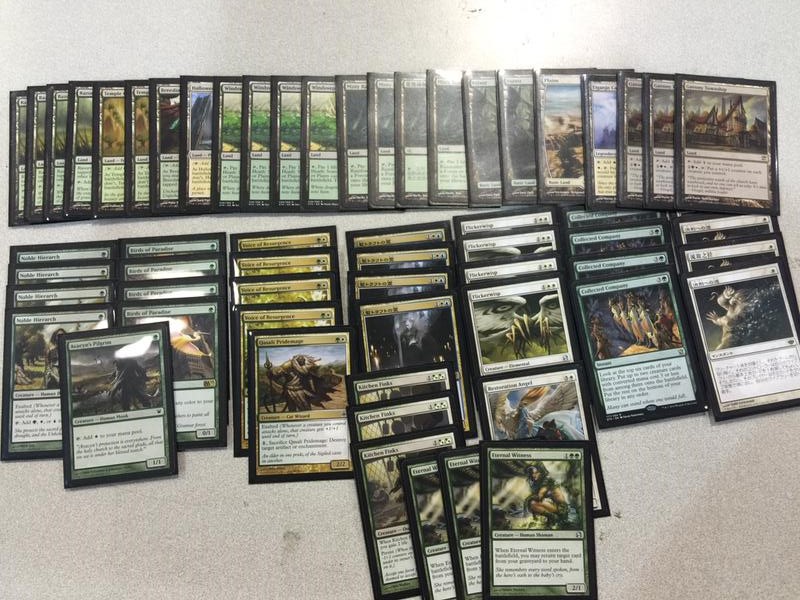While the Modern Masters 2015 release was a few weeks back, this weekend is when the world’s attention will be fixed on the Modern format. The last time StarCityGames hosted a Modern Grand Prix in the southeastern United States, Grand Prix Richmond nearly broke the attendance record set by the original monster GP Vegas. With Charlotte coming on the heels of the huge buzz of Modern Masters weekend, it promises to be another huge event.
I didn’t spend much time preparing for the Modern Masters Limited Grand Prix in Vegas since it was a giant Sealed Deck tournament in a format that I was never going to play again. But Constructed tournaments are much more my speed, and I have been trying out all kinds of different decks to get ready for Charlotte. Most of them have attempted to use Collected Company, as you’ve seen if you’ve been following my recent articles. And while the majority of those experiments didn’t amount to anything I was happy with, the latest has shown a great deal of promise.
My original attempts at Collected Company decks in Modern were all just using the card as a way to generate multiple strong threats at instant speed. I was focused on using individually-powerful creatures to try to get the most immediate impact out of the spell. While the strategy was reasonably effective, I frequently found myself struggling against more-established Modern decks.
While it did offer the tactical dimension of being able to play threats during your opponent’s turn, Collected Company frequently felt like it just didn’t belong in those kinds of decks. With the current pace of Modern, it seemed like a deck full of efficient threats would simply rather have other efficient threats or more removal and disruption to support them instead of a way to dig for two creatures.
Things are very different, however, in a deck where the creatures have more than just raw individual power. We’ve seen Collected Company revitalize combo decks like Melira Combo and Elves, and it’s been able to do that because digging deeper into your deck is a more powerful effect when each of your individual creatures can be worth more than just the sum of their parts. Two Loxodon Smiters is always just going to be two Loxodon Smiters, but a Melira and a Kitchen Finks starts to add up to something more.
I’d been toying around with a number of Abzan decks using things like Spellskite and Doran, the Siege Tower to piece together my own style of creature-based combos when Jacob Wilson posted an image on Twitter of a Bant Collected Company deck that he’d piloted to a 6-2 record in the Modern portion of the Season Two Invitational in Columbus. Immediately, I liked what I saw.
6-2 Modern with Bant Company pic.twitter.com/va4zaEtnGP
— Jacob Wilson (@JacobWilson95) June 6, 2015
Eternal Witness was a card that I’d included in a number of different Collected Company lists that I’d tried, since it’s obviously quite powerful to hit and immediately rebuy the Company for another shot. It also just a great tool in any kind of attrition game, allowing you additional access to whatever you might need late in the game.
Flickerwisp, however, was not something that was on my radar. I’d played it before in Legacy Death and Taxes, as well as in Modern Hate Bears, but it was always a card that I’d thought of as essentially requiring Aether Vial in order to be used effectively. And while it doesn’t have the same tactical implications against removal in this deck as in one which can reliably deploy it at instant speed, Flickerwisp is still quite strong in this shell. It can reset Kitchen Finks or allow you to reuse Eternal Witness, and – if you’re particularly fortunate – you can sometimes hit it off of a Collected Company in response to removal to protect a creature.
The one card in Jacob’s list that stood out to me as not really fitting in to everything else that was going on was Geist of Saint Traft. While Geist is certainly a powerful card, it’s at its best in a deck with a lot of spells to support it. It’s kind of like Goblin Rabblemaster in that way – it doesn’t play especially well with other creatures. Geist wants to be backed up by removal spells to get it past blockers, or even burn spells to finish opponents off once they’re low. It can certainly represent a fast clock on its own against combo decks with nothing to put in its way, but is much less impressive against blockers and it feels out of place in a deck that is otherwise focused on value. You’re certainly not happy to hit a second copy of a legendary creature off of Collected Company when you’re digging for threats, that’s for sure.
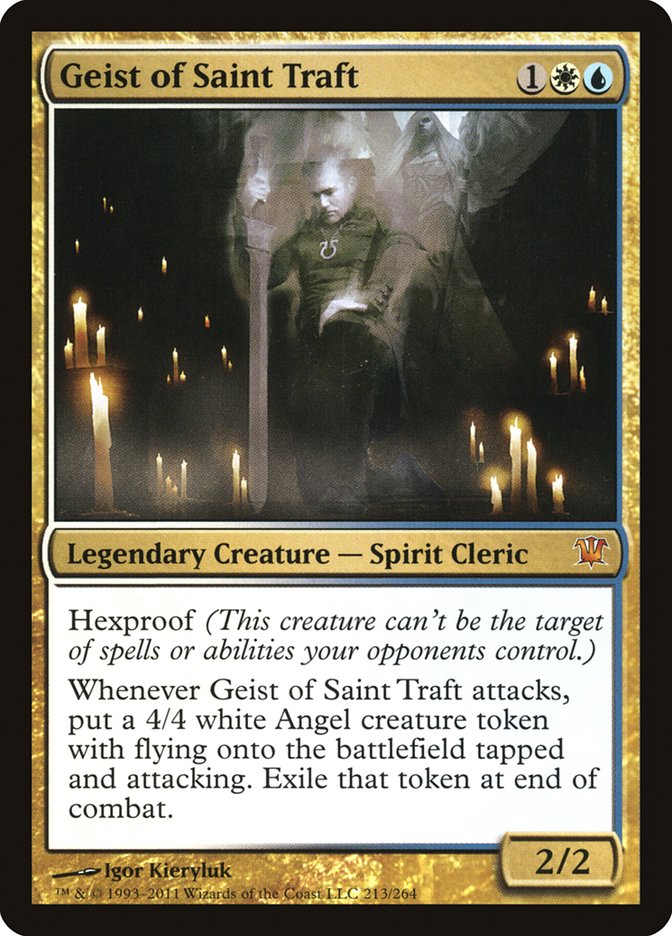
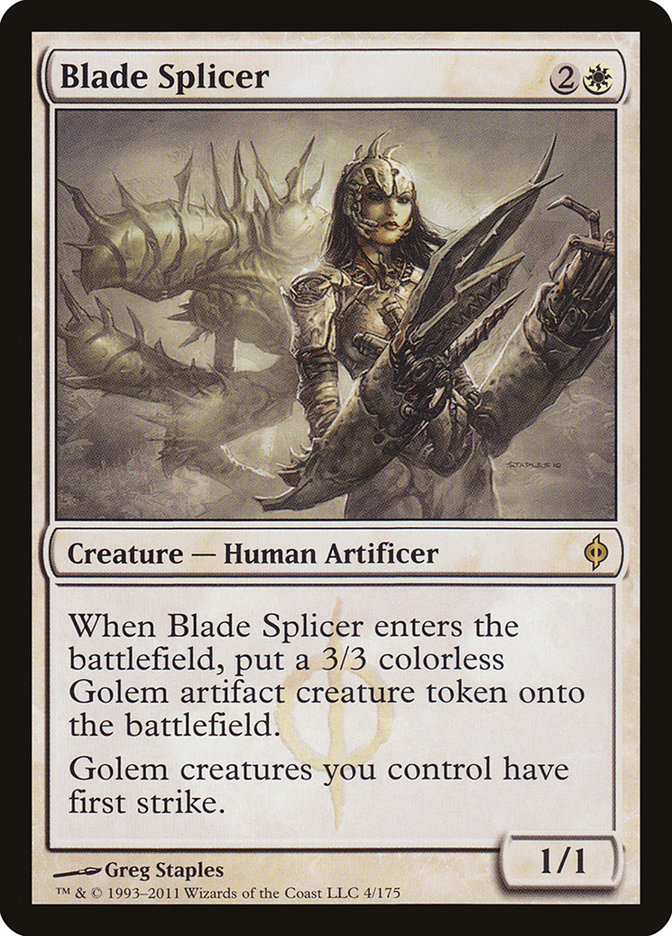
The card I decided to try as a replacement was Blade Splicer. I’ve played a lot of Blade Splicers in my day, mostly in Naya Pod back during Scars of Mirrodin/Innistrad Standard, and it seemed like a perfect fit for this shell. Blade Splicer is very powerful with blink effects like Flickerwisp as well as with Gavony Township – and even better with both of them combined.
Not only does Blade Splicer create an additional body every time you blink it, but those bodies even have first strike as long as the original creature remains in play. That can make it very difficult for opponents to ever attack on the ground even if they have individually-superior creatures like Tarmogoyf. In the meantime, you can continue to grow your army with Eternal Witness + Collective Company shenanigans, pump them with Gavony Township, or just poke away in the air with Flickerwisp.
Here’s what my deck looks like right now:
Creatures (29)
- 4 Birds of Paradise
- 3 Eternal Witness
- 3 Kitchen Finks
- 4 Flickerwisp
- 4 Noble Hierarch
- 1 Qasali Pridemage
- 4 Blade Splicer
- 1 Avacyn's Pilgrim
- 1 Restoration Angel
- 4 Voice of Resurgence
Lands (23)
Spells (8)

This deck is an absolute blast to play, and it’s been performing quite well for me too. Modern is a really big format, so it’s difficult to test any deck against everything you might expect to run into, but I’ve had a chance to put this deck through its paces against many of the most popular decks and it has held its own.
Those of you who watch my videos will notice that I made some changes to the sideboard to help improve the deck’s performance against Burn after struggling in that matchup with a previous build. Burrenton Forge-Tender and Kor Firewalker are both quite powerful against Goblin Guide and friends, especially when backed up by other ways to stall the board and gain life like Voice of Resurgence and Kitchen Finks along with Collected Company to dig for them.
I’ve run into both Abzan and Jund quite a few times on Magic Online, and I’ve been impressed by how well the deck works in those matchups. Cards like Voice of Resurgence and Blade Splicer are great against Liliana, which prevents them from running over you quickly, while Eternal Witness plus Collected Company and Gavony Township give you an extremely powerful long game. Quite often, I found myself winning just by attacking in the air repeatedly with Flickerwisps while the ground was a scrum of golem tokens staring down Tarmogoyfs. The most important card to deal with on their side of the table is generally Scavenging Ooze, since it shuts down your Eternal Witness shenanigans, which is a big part of your attrition plan.
I found Splinter Twin to be a surprisingly strong matchup, which is something that is almost never the case for a G/W creature deck. Game one can be dicey because you only have four copies of Path to Exile in order to really disrupt the combo, but between Voice of Resurgence and Collected Company you can make it very awkward for them to find a good window to actually attempt their combo.
I saw some comments on my last video from people who questioned the motivation behind playing Bant just for a few sideboard cards, but this is exactly the sort of matchup where having access to a few counterspells is extremely valuable. Unified Will allows you to combat either the combo or control plan of Splinter Twin with the same cards regardless of how they sideboard while something like Linvala or creature removal would not. The notion that splashing for only sideboard cards is unusual or incorrect is very strange to me, since it’s a very common strategy in many older formats. In fact, my Pro Tour Austin deck was Naya splashing four copies of Meddling Mage in the sideboard against combo.
Speaking of Meddling Mage, I only have a single copy in my list right now, but it’s quite possible that might change. I haven’t been particularly happy with Vendilion Clique as a sideboard option, in part because of its somewhat-restrictive casting cost. After sideboarding against combo decks like Splinter Twin where I might want Vendilion Clique, I frequently find that my mana creatures are attacked by removal. This can make it awkward to find the double-blue mana necessary to cast Clique, and certainly to cast Clique with blue mana still available for a counter. As a result, I think that I probably don’t want Clique in those matchups, which may lead me to want more copies of Meddling Mage since it’s stronger against faster linear combo decks like Amulet Bloom and Living End.
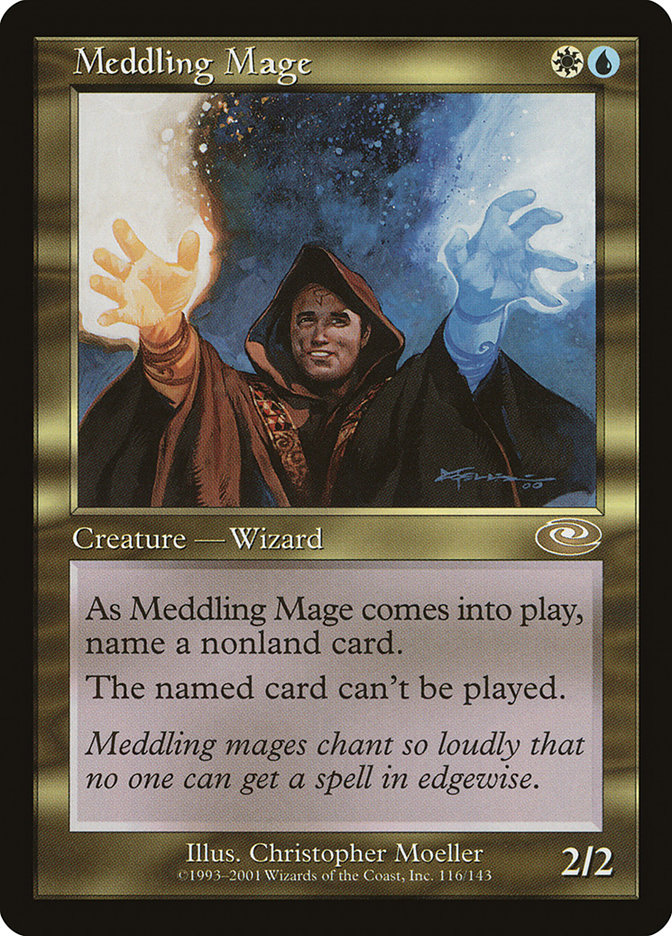
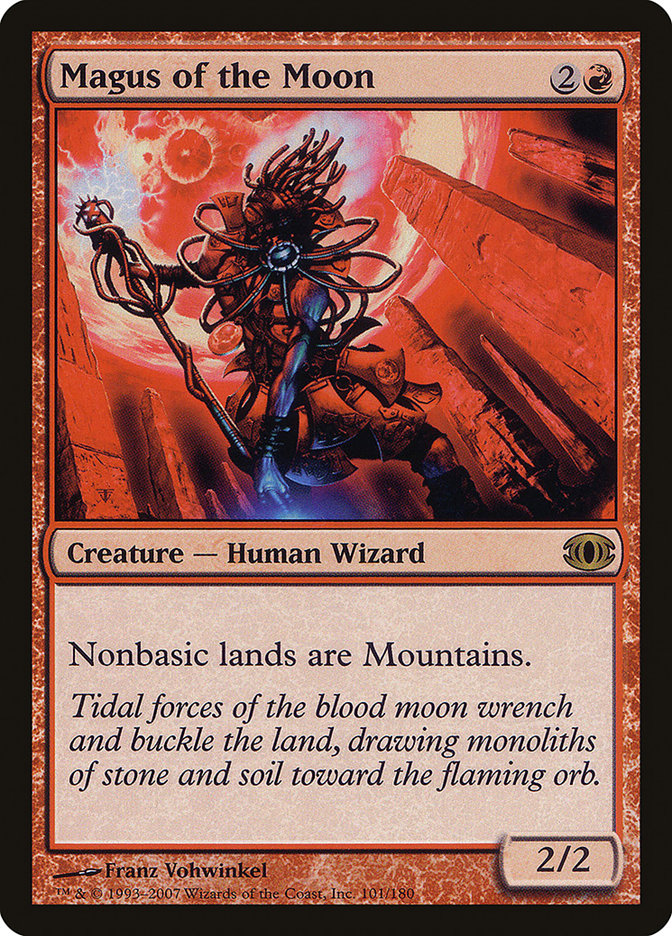
Jacob Wilson played two copies of Magus of the Moon in his sideboard, along with a Stomping Ground and a basic Island, which I have to imagine made up his plan against Amulet Bloom and G/R Tron. I’m somewhat skeptical of that idea, since both Amulet Bloom and G/R Tron are likely to have Pyroclasm in their deck against you after sideboarding. While Magus of the Moon shuts down their ability to generate tons of mana from Uzra lands or bouncelands, it certainly doesn’t keep them from being able to cast Pyroclasm to kill him. Given that the plan requires spending a bunch of sideboard slots on both the Maguses and the lands to use them effectively, I think I’m happier playing Aven Mindcensor and Unified Will instead. And maybe I can fit some Stony Silences in to help against G/R Tron, since I can probably use some more Affinity hate too.
In fact, if I were going to sideboard lands as part of a plan to beat Amulet Bloom and G/R Tron, it’s likely that I’d start with Ghost Quarter. In that same PT Austin sideboard where I packed the full four copies of Meddling Mage, I also played three copies of Ghost Quarter – to go with the one in my maindeck – as a hedge against the Dark Depths and Hypergenesis decks we expected to be popular at that event. These days, Ghost Quarter isn’t quite the Strip Mine it was against the basic-free Hypergenesis decks from that event, but it’s still quite powerful at breaking up Tron and killing bounce lands while the untap trigger from Amulet of Vigor is still on the stack. And if you have Eternal Witness to get it back? Well, now you’re starting to have the makings of a real plan.
I’m not completely certain what my final list for Grand Prix Charlotte will look like – especially the sideboard – but I’m happy with the basic shell I’ve got. It’s a powerful, proactive deck that has a lot of flexible tools to deal with the wide variety of threats out there in Modern. And it’s a whole lot of fun too!
What do you think? Are there any cards I’m missing that could be great in this deck? Do my perspectives on any of the major matchups seem to be off base? Let me know here or find me in Charlotte to chat! I’ll be at the Meet and Greet on Friday evening, or just say hello any time you see me during the weekend. I’m looking forward to it!


